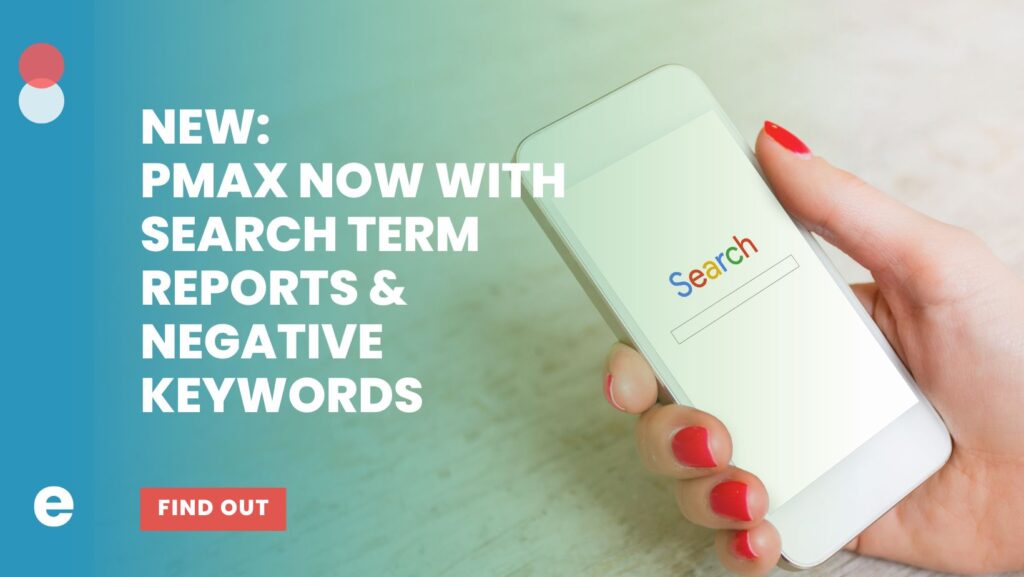discovery noun
dis· cov· ery | \ di-ˈskə-v(ə-)rē \
plural discoveries
1a: the act or process of discovering
1b: disclosure, display
1c: exploration
2: something discovered
3: the usually pretrial disclosure of pertinent facts or documents by one or both parties to a legal action or proceeding
Synonyms: Detection, finding, spotting, unearthing
(source: Merriam-Webster)
When entering into a partnership with any new client (or agency), the discovery step should be viewed for what it is: the single most important step in the entire relationship. More important than meeting and exceeding expectations, more important than firing a toxic business partner, more important than any step, procedure, campaign, adjustment, or finding. Discovery is what allows both parties to see if they can work together in the first place – and yet it is oftentimes so quickly dismissed, merely reduced to the trading of contact information, default head-nods, and signing dotted lines.
Legal vs. Relationship

Legal discovery involves two traditionally adversarial parties (either side of a lawsuit) sharing what they know (or what they have to share of what they know) with each other in the interest of justice. I’ll forgo the obvious jokes and remarks on that process, but if you’ve ever been party to a deposition (or at least seen one on TV) you know that the discovery process can be uncomfortable, and is the absolute opposite of how discovery should be approached with a new client or agency partner.
Why the opposite? Because both parties should be interested in working together. In a legal discovery session, the two parties would rather have the other party just not show up, force a default judgment, boom, done. A win for the client and the firm.

But in a personal relationship, the mindset is that the two parties are seeking to be something greater than the sum of their parts. In regards to two people wanting to be more than just friends, they look for the value in working together to accomplish a shared goal they can’t achieve separately, be that something as simple as combating loneliness to something as long-term and multi-faceted as starting a family. If the two parties aren’t even interested in working together in the first place, then there’s no need for discovery, you simply walk away. So, for today’s discussion, we should think of our discovery session more along the lines of entering a relationship versus dueling lawyers.
Amount of Discovery
How much discovery is too much? Not enough? There is no stock answer to this question. But the length and depth of the intended relationship should give you an idea. Are you being asked to perform an entire brand refresh? Is this a three-year contract? Ten years? Or are you simply being asked to provide some strategic direction on a single project, with a timeline of six weeks? In short, are we going through the pre-marriage courtship phase or are we simply “swiping right” for the evening?
If you think of this in terms of entering a marriage, you no doubt have more questions of a potential partner than someone you just met on a dating app. Likewise, your risk is higher entering into a mutual relationship intended to last a lifetime versus a theoretical one-night stand.
Simple projects can simply be walked away from. Long-term contracts with several layers of commitment (with possible dedicated hires/contractors, technology investments, travel, etc…) and huge blocks of time are less easy to walk away from and can land you in some hurt feelings, damaged reputations, depleted bank accounts, or worse.
If you’re ever in doubt, err on the side of too much information. Sometimes one simple question can lead to an entire “discovery” of what could have remained a hidden issue. Sometimes discovery uncovers what the REAL point of the project is, and may require an entirely new approach in order to attain the underlying goal, holistically.
Transparency
Whether you are the client or the agency in this particular partnership, disclosing ALL of your strengths and weaknesses is key to future success.
You don’t want to get catfished even for the short-term, “Your capabilities are nothing like your website” is the marketing equivalent of “You look nothing like your photo” in the realm of personal relationships. Be upfront and honest, not just about your core competencies, but also about blind spots in expertise, leadership depth, or technical prowess.
Another part of transparency is asking tough questions and giving unpopular answers. If you don’t ask about a client’s financial health, who do you have to blame when six months later they’re not paying their bills? Conversely, if you hire an agency and accepted terms that you weren’t comfortable with, but signed anyways, how is this relationship going to feel moving forward?
Capabilities

You need to understand each other’s capabilities – good and bad. Typically this is viewed from a client looking to hire an agency, typically manifested in the form of an RFP. However, the agency needs to consider the capabilities of the client – there are two sides to this bridge after all, and both sides need to be able to hold up their end, so to speak. Can each party on each side of this relationship adequately deliver what they are agreeing to deliver, and just as important, can the other party adequately receive – or implement – that which the other party is providing?
Finding out weeks into a project that your solution cannot be implemented due to a software barrier, skill deficiency, or some other limitation can turn disastrous.
Rules of Engagement
How is communication going to happen throughout this relationship? Are we simply emailing each other? On-site, in-person meetings? Video conferencing? If so, which platforms do you use, who will be adopting the other’s preferred method? Does one side not allow Google Drive access? Is one party rather gated from a technology standpoint? Is one party entrenched in Slack while the other is using Hangouts?
What level of access are you offering each other? Are there gatekeepers that everything will run through (this adds time but keeps things organized and trackable) or can various elements of each organization contact one another freely (this reduces feedback time but can result in an organizational mess). Are your IT and Creatives the kinds that avoid direct contact like a cave-dweller, or are they comfortable with handling certain interactions on their own? More importantly, do you trust them (if you don’t, then you have an entirely separate issue to face, but that’s for another time & place) to handle scenarios/interactions that are covered by their relative skillsets?
These are things that – while seemingly simple on the surface – need to be discussed and sorted out during discovery so there isn’t any confusion moving forward.
Scope

Ah scope… the guardrails of any given project. Those subtle reminders from your PMs that keep things on time and within budget. Without clear definitions of what constitutes an agreeable scope for a given project, you’re basically inviting both parties to go off-road, as it were, and chart their own paths – paths that in all likelihood will take everyone to someplace beyond the agreed upon destination: an on-time and in-budget deliverable.
What is the end result? What are the building blocks needed to achieve the end result? What percentage of “wiggle room” is built into the overall scope management to ensure that the inevitable roadblock can be dealt with without torpedoing the entire project? This is where having talented PMs on either side of the relationship (and account people who can effectively communicate these items) make your money and your reputation.
KPIs
Especially in the realm of digital marketing, what are the metrics by which we will mutually agree to define success or failure? These Key Performance Indicators (KPI) will, of course, depend on the stated goal: i.e. conversions, sales, views, etc…
Essentially, we’re talking about how we’re going to measure the success of this journey we’re taking together. Are we measuring it based on how fast we get there? How efficient we were on our travels? How few times we had to stop? How many sights did we see along the way? Once we all agree upon those KPIs, we can better understand the preferred route to take towards that end goal.
Timelines
Pretty self-explanatory, but timelines keep everyone on track, and serve as coal mine canaries to possible issues. If timelines are already starting to deviate for whatever reason, that reason will need to be addressed by both parties to see if 1) the issue can be resolved and the timeline restored or, 2) the timeline needs to be amended to account for this previously unseen situation that requires attention before we can move forward.
Methodology – Agile vs. Waterfall
We’ll forgo the whole agile vs. waterfall debate here, but for the purposes of discovery, each party needs to communicate their preference, why it’s their preference, and how that decision will orchestrate the project.
Roles & Responsibilities
Who is responsible for what. Who will be the point of contact, who will be the budget/scope watchdog? Who will be responsible for content? Who will be responsible for every component of the project from discovery to exit? And more importantly, this is the time to make all parties aware of their roles, their counterparts, and how they are expected to interact and collaborate throughout the life of the project.
Holistic Goals

While a specific project may seem fairly cut-and-dried from a discovery POV, what greater good is that project serving? If you’re rebuilding a website, that’s pretty obvious. But is that new website part of a larger rebranding? Is it to house content that wasn’t there previously? Is this site to act more like a landing page? Understanding what the larger goal is absolutely paramount to understanding some of the governing dynamics surrounding your specific project. You’d be surprised how often one party doesn’t think to share these larger goals and how often one party doesn’t think to ask about them.
In some cases, you may find that the current ask isn’t the best solution once you’ve discovered (heh) the true goal of the project – you may find that an altogether different solution may yield better results or require fewer resources.
Competitors – Real and Virtual
Of course in any marketing endeavor, your physical competitors should be clearly marked. Those that traffic in your space needs to be researched. They may offer hints as to patterns that are working, and others that aren’t – which can save you a few (mis)steps when planning how to achieve your goal.
Aside from physical competitors, you may have virtual ones, such as “awareness” or “ease of use” surrounding a product or service. Maybe there are inefficiencies or pain-points in your customer journey that contribute to high bail-out rates, or perhaps your UX is such that people would just rather not. These “competitors” can delay conversion, or worse, send them searching for physical competitors who have sorted these issues out.
Emulators
Some of your competitors may prove to be worthy of emulation. They may be employing specific strategies or technology that gives them a leg up on conversion, retention, or some other metric that you will want for your own project. Some areas to consider when thinking about emulation:
Messaging – How effective is their content?
Perception – How are they viewed in the marketplace?
Strategy – How innovative are their campaigns
Visual design – Do they employ compelling and informative visuals that support their products and related campaigns?
UX – how easy is it to interact with them on their site? On mobile? In social media? When you need help?
A word of caution: emulation can have a backlash effect among your users. They’ll typically be aware of your competitors, even if they give their money to you, so be careful to emulate strategy and best practices versus looking like you just ripped off their “look”. If you aren’t careful, you’ll position yourself as a copy of something greater. This essentially makes your competition seem greater than they might be.
Exit Strategy

What happens when the goal is achieved? Do we part ways? Is it time to start a refresh cycle? Do we start to scale this process into other areas? These are the good questions to ask about an exit strategy. The not-so-fun ones are: what happens when we feel like this isn’t working out? How are contracts handled then? Who owns what at what point of the process? Etcetera.
A partnership is a relationship. A relationship is an investment. The success or failure of an investment is often directly correlated to the amount of research one does before sealing the deal. Discovery is where you perform your due-diligence. Discovery is where you find out the real level of effort for a given project. Discovery is what needs to happen before you both decide to work together. The more discovery you can perform, the more accurate your picture of the overall project will be, thus the more prepared you both will be to see your project through to completion.
___
Have a hurdle you’d like to clear? Drop us a line and let’s see how we can work together to get you from Difficult to Done.


